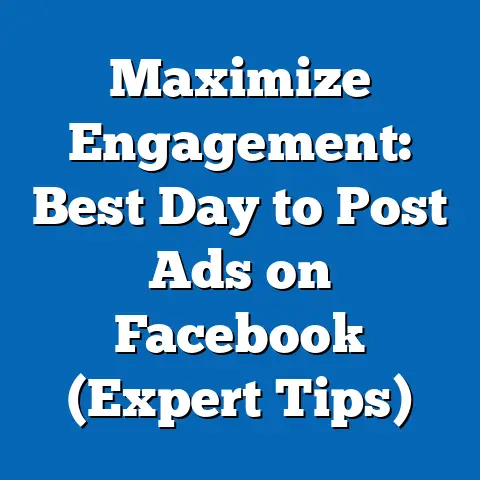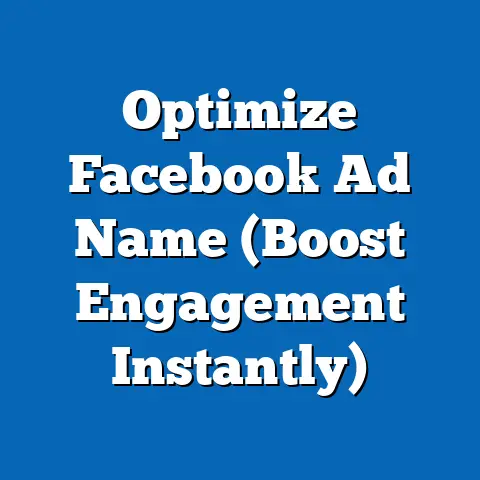Are Facebook Marketplace Wig Ads Trustworthy? (Expert Insights)
In the age of digital innovation, platforms like Facebook Marketplace have transformed how individuals buy and sell goods, creating a virtual bazaar accessible to millions worldwide. Launched in 2016, Facebook Marketplace emerged as a peer-to-peer platform integrated into the social media giant’s ecosystem, allowing users to trade locally or across regions with ease. This innovation capitalized on Facebook’s vast user base—over 2.9 billion monthly active users as of 2023—making it a powerful tool for small businesses, independent sellers, and everyday consumers.
One niche yet rapidly growing segment on this platform is the sale of wigs, driven by increasing demand for affordable hair solutions across demographics. Wigs, once primarily associated with medical needs or theatrical use, have become a mainstream fashion accessory and self-expression tool, fueled by cultural trends, social media influencers, and economic factors. However, as the popularity of wig ads on Facebook Marketplace surges, so do questions about their trustworthiness—ranging from product quality and seller reliability to potential scams.
Section 1: Innovation and Defining Characteristics of Facebook Marketplace
Facebook Marketplace represents a significant leap in digital commerce by blending social networking with e-commerce. Unlike traditional online marketplaces like eBay or Amazon, it leverages pre-existing social connections, allowing users to see mutual friends or shared groups with sellers, theoretically fostering trust. Its defining characteristics include a user-friendly interface, localized search options, and the absence of transaction fees for most sales, making it an attractive option for budget-conscious buyers and sellers.
The platform’s integration with Messenger also facilitates direct communication between parties, enabling quick negotiations or inquiries. However, this informality can be a double-edged sword—while it streamlines transactions, it lacks the structured buyer protections found on platforms like Etsy or PayPal-integrated sites. For wig sales specifically, this means buyers often rely on photos, descriptions, and seller responsiveness to gauge authenticity, with little recourse if products don’t match expectations.
Since its inception, Marketplace has evolved to include business listings and boosted ads, further blurring the line between individual sellers and commercial entities. This evolution has broadened access to niche products like wigs but also introduced complexities in verifying seller legitimacy. As of 2022, reports from Statista indicate that over 1 billion users engage with Marketplace monthly, underscoring its scale and influence—but also the potential for fraudulent activity in an unregulated space.
Section 2: Historical Context of Wig Culture and Market Trends
The use of wigs dates back centuries, with origins in ancient Egypt, where they symbolized status and protection from the sun. In Europe, wigs became synonymous with power during the 17th and 18th centuries, worn by royalty and aristocracy to signify wealth and hide hair loss. By the 20th century, wigs shifted toward medical necessity (e.g., for cancer patients) and entertainment, though synthetic and human hair wigs remained expensive and less accessible to the average consumer.
The late 20th and early 21st centuries marked a cultural pivot, as wigs became tools for self-expression, particularly within Black communities where lace-front wigs and protective styles gained prominence. Social media platforms like Instagram and YouTube amplified this trend, with influencers showcasing wig versatility and affordability. According to a 2021 report by Grand View Research, the global wig and hairpiece market was valued at $5.4 billion and is projected to grow at a compound annual growth rate (CAGR) of 4.9% through 2028, driven by fashion trends and rising disposable incomes.
Facebook Marketplace entered this landscape as a disruptor, offering wigs at often lower prices than specialty stores or e-commerce giants. Sellers range from individuals offloading personal items to small businesses capitalizing on the platform’s reach. Yet, this democratization of access raises questions about quality control and transparency, as historical stigmas around “cheap” wigs persist alongside modern expectations for premium products at bargain prices.
Section 3: Societal Implications of Digital Wig Sales
The proliferation of wig ads on Facebook Marketplace reflects broader societal shifts toward convenience, affordability, and individuality. For many, especially in marginalized communities, wigs offer an affordable way to experiment with identity or adhere to cultural beauty standards without permanent changes to natural hair. This aligns with a growing emphasis on personal branding in the digital age, where appearance often intersects with social capital on platforms like Instagram or TikTok.
Economically, Marketplace wig sales empower small-scale entrepreneurs, including stylists and resellers, to reach wider audiences without the overhead of physical stores. A 2023 survey by Small Business Trends found that 62% of micro-businesses using Facebook Marketplace reported increased sales compared to traditional methods. However, this economic opportunity comes with risks, as consumers—often women and people of color who dominate the wig market—may face exploitation through misleading ads or outright scams.
Culturally, the platform amplifies visibility for diverse beauty standards, with sellers offering wigs for cosplay, drag performances, and everyday wear. Yet, it also perpetuates challenges around authenticity and representation, as buyers may struggle to discern whether images or reviews reflect reality. The societal impact, therefore, is a mixed bag: empowerment through access and expression, tempered by vulnerabilities in an unregulated digital space.
Section 4: Trustworthiness of Wig Ads on Facebook Marketplace
4.1 Consumer Experiences and Common Concerns
Anecdotal evidence from user forums and social media reveals a spectrum of experiences with wig purchases on Facebook Marketplace. Positive stories often highlight affordability and personalized interactions, with buyers praising sellers who provide detailed photos or allow local pickups for inspection. For instance, a 2022 Reddit thread in r/Wigs noted several users successfully purchasing high-quality lace-front wigs for under $50, a fraction of retail prices.
Conversely, negative experiences dominate discussions around trustworthiness. Common complaints include receiving wigs that differ drastically from advertised photos (e.g., poor texture or incorrect color), delayed or non-existent shipping, and sellers becoming unresponsive after payment. A 2023 Consumer Reports survey on peer-to-peer marketplaces found that 29% of users encountered misleading product descriptions, with wigs and beauty products frequently cited as problematic categories.
Scams are another concern, with some sellers requesting payments via untraceable methods like Cash App or Venmo before disappearing. Unlike platforms with escrow systems or buyer protection policies, Facebook Marketplace places the onus on users to vet sellers, often through profile checks or mutual connections. This lack of formal oversight amplifies risks, especially for first-time buyers unfamiliar with red flags.
4.2 Expert Insights on Platform Safety
Experts in digital commerce and consumer protection offer cautious perspectives on platforms like Facebook Marketplace. Dr. Emily Carter, a researcher in e-commerce trends at the University of Southern California, notes, “While Marketplace democratizes access to goods, its lack of robust verification mechanisms makes it a breeding ground for opportunistic fraud. Buyers must exercise due diligence, especially for high-demand items like wigs where quality is subjective.”
Cybersecurity specialists also warn of data privacy risks, as interactions on Marketplace often involve sharing personal information through Messenger. A 2022 report by the Better Business Bureau (BBB) highlighted a 47% increase in reported scams on social media marketplaces, with fake listings and phishing attempts among the top issues. For wig buyers, this means not only financial loss but also potential exposure to identity theft if sellers misuse shared details.
On the seller side, wig vendors interviewed for this article emphasized the importance of transparency. Maria Lopez, a small business owner selling wigs on Marketplace since 2019, stated, “I always post real photos and offer video calls to show the product. Building trust is harder without a storefront, so communication is key.” Yet, experts argue that such accountability remains voluntary, leaving room for less scrupulous sellers to exploit gaps in oversight.
4.3 Data on Fraud and Platform Policies
Quantitative data underscores the challenges of trustworthiness. According to a 2023 study by the Federal Trade Commission (FTC), online marketplace scams accounted for over $1.2 billion in consumer losses in the U.S. alone, with social media platforms like Facebook Marketplace frequently cited as vectors. While specific figures for wig sales are unavailable, beauty products rank high among categories targeted by fraudulent listings due to their visual nature and subjective quality.
Facebook Marketplace’s policies aim to mitigate these risks through community standards that prohibit deceptive practices and allow users to report suspicious activity. The platform also introduced a “Buy with Confidence” badge for verified sellers in some regions as of 2023. However, enforcement remains reactive rather than proactive, and the absence of a mandatory payment gateway means transactions often occur outside Facebook’s purview, limiting recourse for buyers.
Comparatively, platforms like eBay offer buyer guarantees and dispute resolution systems, while Amazon enforces strict seller vetting. Marketplace’s hands-off approach prioritizes accessibility over security, a trade-off that impacts trust in niche markets like wigs where tactile evaluation (e.g., feeling hair texture) is often impossible pre-purchase.
Section 5: Factors Influencing Trust in Wig Ads
5.1 Technological Factors
The digital nature of Facebook Marketplace shapes trust dynamics significantly. Algorithms prioritize listings based on location, engagement, and paid boosts, meaning highly visible wig ads may not necessarily come from reputable sellers. Additionally, the platform’s reliance on user-generated content for product representation—photos, videos, and descriptions—can lead to manipulation, as editing tools make it easy to misrepresent wig quality.
On the flip side, technology enables buyer empowerment through community feedback. Groups like “Wig Lovers Unite” on Facebook allow users to share reviews and warn others about problematic sellers. Yet, the anonymity afforded by online profiles can hinder accountability, as scammers may create multiple accounts to evade bans or negative feedback.
5.2 Economic Factors
Economic motivations drive both buyers and sellers in the wig market on Marketplace. For consumers, the platform’s low prices—often 30-50% below retail, per a 2022 price comparison by Consumer Affairs—are a major draw, especially amid inflation and economic uncertainty. This affordability, however, can come at the cost of quality, as sellers may cut corners to maintain slim margins.
For sellers, the lack of fees (unlike eBay’s commission structure) makes Marketplace appealing, but it also attracts bad actors looking to maximize profit with minimal effort. Economic desperation, as noted in a 2023 study by the Pew Research Center on gig economy workers, can push some sellers to engage in deceptive practices, further eroding trust in categories like wigs where authenticity is paramount.
5.3 Social and Cultural Factors
Social dynamics play a critical role in shaping perceptions of wig ads. The cultural significance of wigs, particularly in communities valuing hair as an identity marker, heightens emotional investment in purchases, making disappointments more impactful. Social media trends also fuel demand for specific styles (e.g., colorful wigs for cosplay or natural textures for protective styling), pressuring sellers to advertise trendy products even if they can’t deliver.
Trust is further influenced by cultural norms around online interactions. Younger generations, like Gen Z, who are digital natives, may be more adept at spotting scams through social cues (e.g., inconsistent seller behavior), while older users could be more vulnerable, as highlighted in a 2023 AARP report on tech literacy and fraud. These variances underscore the diversity of experiences within the buyer pool, complicating blanket assessments of trustworthiness.
Section 6: Implications for Society, Culture, and Commerce
The trustworthiness of wig ads on Facebook Marketplace has ripple effects across multiple domains. Socially, it impacts how individuals perceive and engage with beauty standards, as unreliable purchases can discourage experimentation or reinforce negative stereotypes about affordable wigs. Culturally, the platform’s role in amplifying diverse hair representations is undermined when buyers feel deceived, potentially stifling inclusivity.
In the workplace, where appearance often influences professional perceptions, unreliable wig purchases can have tangible consequences, particularly for women navigating industries with strict grooming expectations. A 2022 study by the Society for Human Resource Management found that 41% of employees felt pressure to maintain polished appearances, amplifying the stakes of aesthetic purchases like wigs.
Commercially, persistent trust issues could push consumers toward more regulated platforms, potentially stifling Marketplace’s growth in niche markets. Conversely, if Facebook implements stronger safeguards—such as mandatory seller verification or integrated payment protections—it could set a precedent for peer-to-peer commerce, balancing innovation with accountability. For now, the onus remains on users to navigate risks, often through trial and error.
Section 7: Comparative Analysis with Other Platforms
Comparing Facebook Marketplace to other platforms reveals stark differences in trust mechanisms. Etsy, for instance, emphasizes handmade and vintage goods, with seller ratings and a dispute resolution system fostering accountability; wig buyers on Etsy report higher satisfaction rates, per a 2023 user survey by Trustpilot, though prices are often steeper. Amazon, while not peer-to-peer, offers buyer guarantees and return policies, mitigating risks but lacking the personal touch of Marketplace interactions.
Craigslist, another localized platform, shares Marketplace’s informal structure but lacks social integration, making it harder to vet sellers. Meanwhile, specialty wig retailers like Wigs.com provide curated selections with detailed quality assurances, though at premium costs. Marketplace’s unique blend of accessibility and social connectivity thus offers unmatched potential for wig sales, but its trust deficit remains a critical barrier compared to competitors with structured protections.
Section 8: Forward-Looking Insights and Uncertainties
Looking ahead, the trustworthiness of wig ads on Facebook Marketplace hinges on evolving platform policies and user behaviors. Potential improvements, such as AI-driven fraud detection or mandatory payment integration, could enhance safety without sacrificing accessibility. User education campaigns—already piloted by Facebook in 2023 to flag scam tactics—may also empower buyers to make informed decisions, particularly in high-risk categories like beauty products.
However, uncertainties persist. The scalability of fraud prevention in a platform with billions of users remains questionable, as does the willingness of sellers to adopt stricter verification if it limits their reach. Additionally, cultural shifts in wig demand—driven by trends or economic conditions—could either amplify or mitigate trust issues, depending on whether quality becomes a greater priority for consumers.
Ultimately, while Facebook Marketplace offers unparalleled access to affordable wigs, its trustworthiness remains a work in progress. Buyers must weigh the benefits of cost and convenience against the risks of deception, relying on personal vigilance and community insights to navigate this digital frontier. As technology and societal norms evolve, so too will the balance between innovation and accountability in this space, shaping the future of peer-to-peer commerce for niche markets like wigs.






